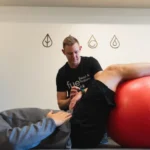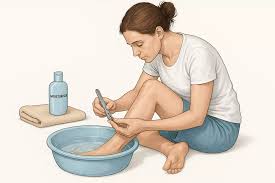Diabetes is a global health challenge that affects millions of people. Managing this condition effectively requires a combination of advanced technologies, proven therapies, and supportive lifestyle choices. By understanding the tools and practices available, individuals can take meaningful steps to improve their health while effectively managing diabetes. Here are some cutting-edge technologies to help control diabetes:
Continuous Glucose Monitoring
Continuous Glucose Monitoring (CGM) systems are revolutionizing diabetes management. By using a small sensor placed just under the skin, these devices provide real-time data on blood glucose levels. This insight enables individuals to track fluctuations throughout the day and overnight, allowing them to make informed decisions about meals, activity, and medication. Alongside their usability, many CGMs are compatible with smartphones or smartwatches, offering convenience and easy access to data.
Insulin Pump Technology
Insulin pumps are another technological innovation that helps improve diabetes care. These small, wearable devices deliver insulin into the body through a catheter placed under the skin. Programming specific doses allows users to match their insulin delivery with their body’s needs closely. Advanced models of insulin pumps come with features like basal rate adjustments and bolus calculators for meals, making them highly accurate compared to traditional injection methods.
People managing type 1 diabetes may benefit the most from using insulin pumps. The ability to adjust doses for exercise, stress, or unexpected fluctuations in glucose levels makes these devices a valuable tool for managing diabetes. Additionally, combining insulin pumps with continuous glucose monitoring (CGM) devices further enhances glycemic control by creating an interconnected approach to diabetes management.
Medication as Therapy
Medication is an integral part of many diabetes treatment plans. For individuals with type 1 diabetes, insulin therapy remains the foundation of care. This therapy involves administering insulin to compensate for the body’s inability to produce it naturally. There are three types of insulin: rapid-acting, intermediate-acting, and long-acting, each designed to meet different needs.
For those living with type 2 diabetes, medication options may include oral drugs that target insulin resistance or manage glucose production. GLP-1 receptor agonists are an example of medications that have demonstrated effectiveness in managing type 2 diabetes. Working with healthcare professionals makes sure the right balance is achieved with minimal side effects.
Lifestyle Adjustment Control
Achieving control typically requires adjustments to daily routines, particularly in terms of physical activity. Establishing a regular exercise routine helps improve insulin sensitivity and regulate blood sugar levels. Activities such as walking, swimming, and cycling offer excellent benefits without being overly strenuous. Strength training helps build muscle, which in turn assists the body in transferring glucose.
Diabetic Dietary Changes
When it comes to managing diabetes, dietary changes form a solid foundation. Planning meals around nutrient-dense foods helps stabilize blood sugar levels effectively. Focus on a diet filled with whole grains, lean proteins, and a variety of fresh vegetables. Incorporating fiber-rich foods, such as beans, lentils, and oats, slows down glucose absorption, promoting stability throughout the day.
Ask a Primary Care Doctor About Diabetes Control
Technologies empower people to monitor and manage diabetes with greater precision. Alongside these tools, therapies like medication, dietary changes, and lifestyle adjustments create a well-rounded approach to management. By integrating these strategies, individuals will be more equipped to balance their health goals and routines. If you or a loved one is managing diabetes, take the time to explore the tools and therapies available today with a professional.














